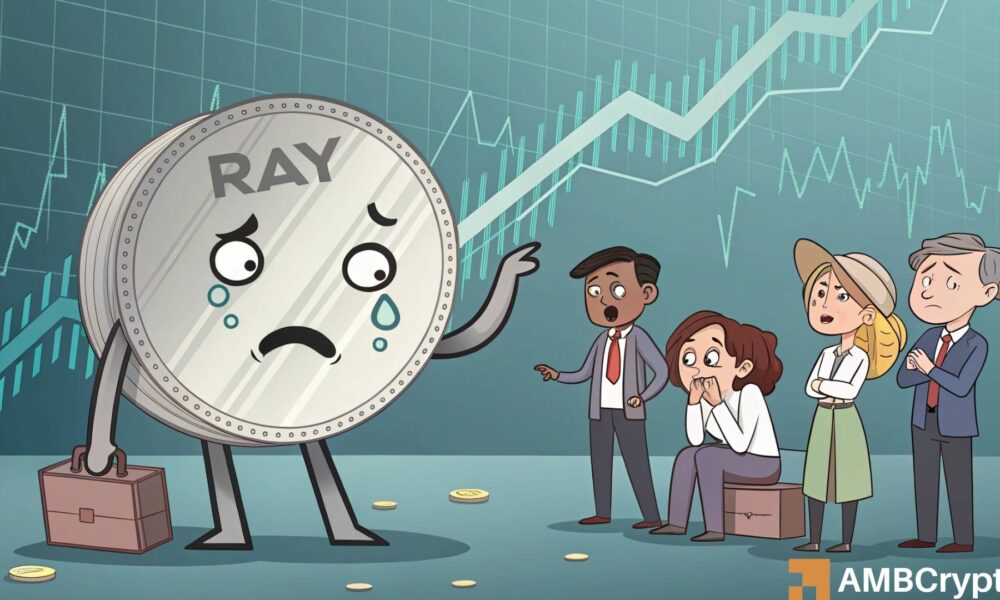In the face of market uncertainty, Raydium [RAY] has experienced significant turbulence following rumors about Pump.fun launching its Automated Market Maker (AMM) liquidity pool, triggering a wave of investor sell-offs.
The introduction of the initial test token, $CRACK, on Pump.fun’s AMM pool has sparked concerns among RAY investors regarding its future within the Solana ecosystem.
As per data from CoinMarketCap, RAY has witnessed a decline below the crucial $4.20 support level, resulting in a 21.04% price plunge. Notably, the trading volume has surged by 65.74% within the past 24 hours as of the time of this report.
Analysis of Raydium’s price movement on the chart
RAY has broken down from its right-angled ascending broadening pattern on the daily chart and was priced at $2.41 at the time of reporting.
Following the news about Pump.fun’s AMM, the token slid below the key $4.20 support level, witnessing a loss of over 27% of its market value.
Given the prevailing market concerns surrounding Raydium, renowned analyst Ali Martinez, formerly of Twitter, has identified the next significant support level at $2.20.
Going forward, the $4.00-$4.20 range is expected to serve as the new resistance zone for RAY.
Evaluation of Raydium’s on-chain metrics amid recent market developments
Despite the price dip, RAY’s trading volume has shown a notable uptick of 65.74% over the past 24 hours, indicating heightened market participation.
Based on data from TradingView, the Relative Strength Index (RSI) was recorded at 26 at the time of reporting, while the MACD(12,26) stood at -0.6569, suggesting oversold conditions and strong bearish momentum.
Moreover, Raydium’s Open Interest has witnessed a decline of 33.85%, and the Funding Rate has turned negative after several months of positive readings.
Figures from DefiLlama indicate that Raydium’s Total Value Locked (TVL) has been steadily decreasing, reaching $1.213B as of the latest update.
An unexpected surge in active network addresses implies substantial panic selling by investors in response to market developments.
Assessment of Market Sentiment: Separating FUD from reality
At present, Raydium’s Long-Short Ratio stands at 0.93, indicating a slightly negative neutral sentiment zone per Coinglass data, suggestive of more sellers than buyers in the market.
With short-term, mid-term, and long-term moving averages signaling a strong “Sell” sentiment, the fears and uncertainties among traders might carry legitimacy.
Should buyers successfully uphold the $2.70 level with robust volume, disregarding the prevailing FUD, a potential trend reversal towards the key $3.50-$4.00 zone could materialize for Raydium.
Conversely, if sellers maintain dominance, RAY could experience a further decline towards $2.20.

